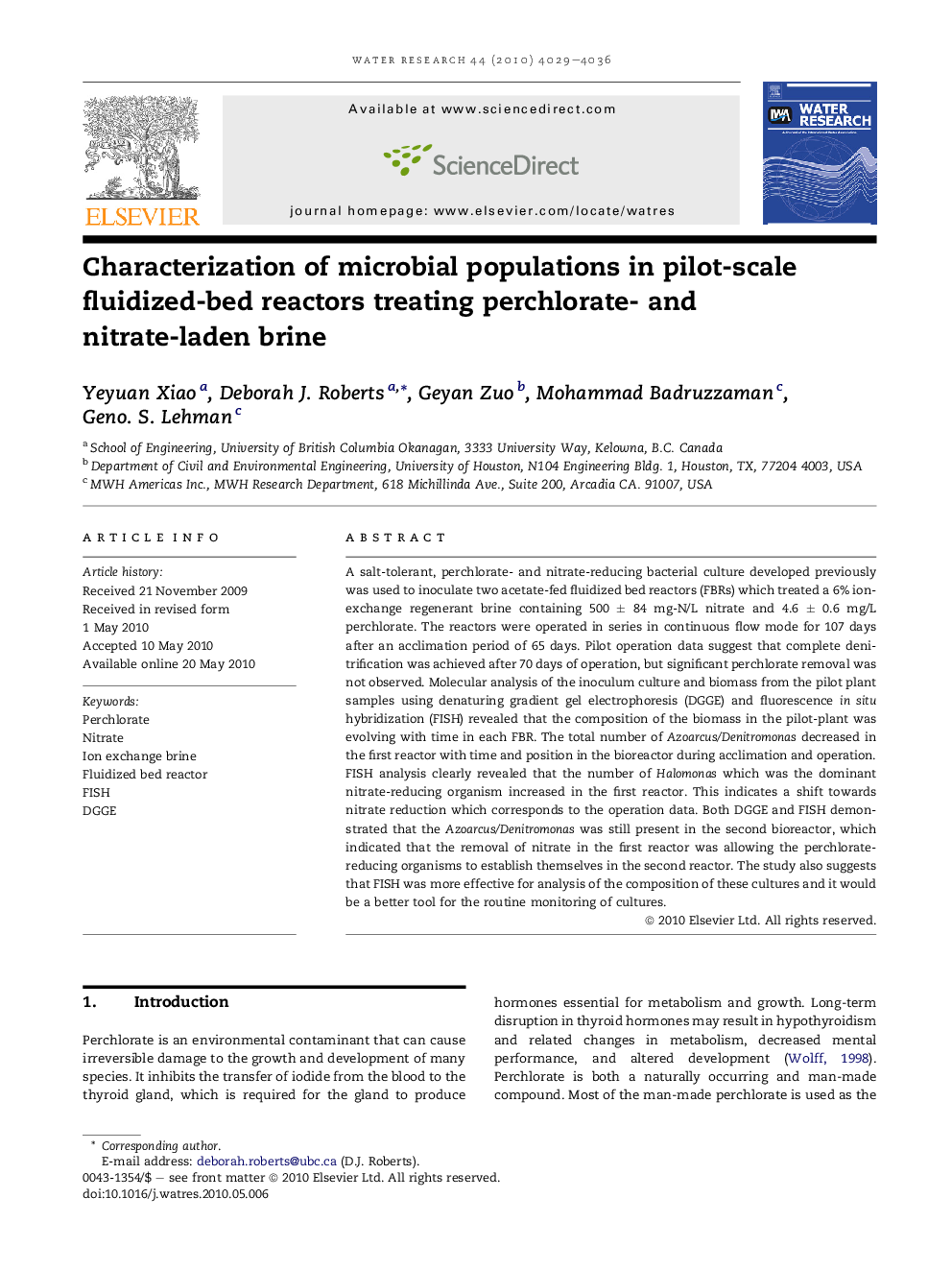| Article ID | Journal | Published Year | Pages | File Type |
|---|---|---|---|---|
| 4483644 | Water Research | 2010 | 8 Pages |
A salt-tolerant, perchlorate- and nitrate-reducing bacterial culture developed previously was used to inoculate two acetate-fed fluidized bed reactors (FBRs) which treated a 6% ion-exchange regenerant brine containing 500 ± 84 mg-N/L nitrate and 4.6 ± 0.6 mg/L perchlorate. The reactors were operated in series in continuous flow mode for 107 days after an acclimation period of 65 days. Pilot operation data suggest that complete denitrification was achieved after 70 days of operation, but significant perchlorate removal was not observed. Molecular analysis of the inoculum culture and biomass from the pilot plant samples using denaturing gradient gel electrophoresis (DGGE) and fluorescence in situ hybridization (FISH) revealed that the composition of the biomass in the pilot-plant was evolving with time in each FBR. The total number of Azoarcus/Denitromonas decreased in the first reactor with time and position in the bioreactor during acclimation and operation. FISH analysis clearly revealed that the number of Halomonas which was the dominant nitrate-reducing organism increased in the first reactor. This indicates a shift towards nitrate reduction which corresponds to the operation data. Both DGGE and FISH demonstrated that the Azoarcus/Denitromonas was still present in the second bioreactor, which indicated that the removal of nitrate in the first reactor was allowing the perchlorate-reducing organisms to establish themselves in the second reactor. The study also suggests that FISH was more effective for analysis of the composition of these cultures and it would be a better tool for the routine monitoring of cultures.
